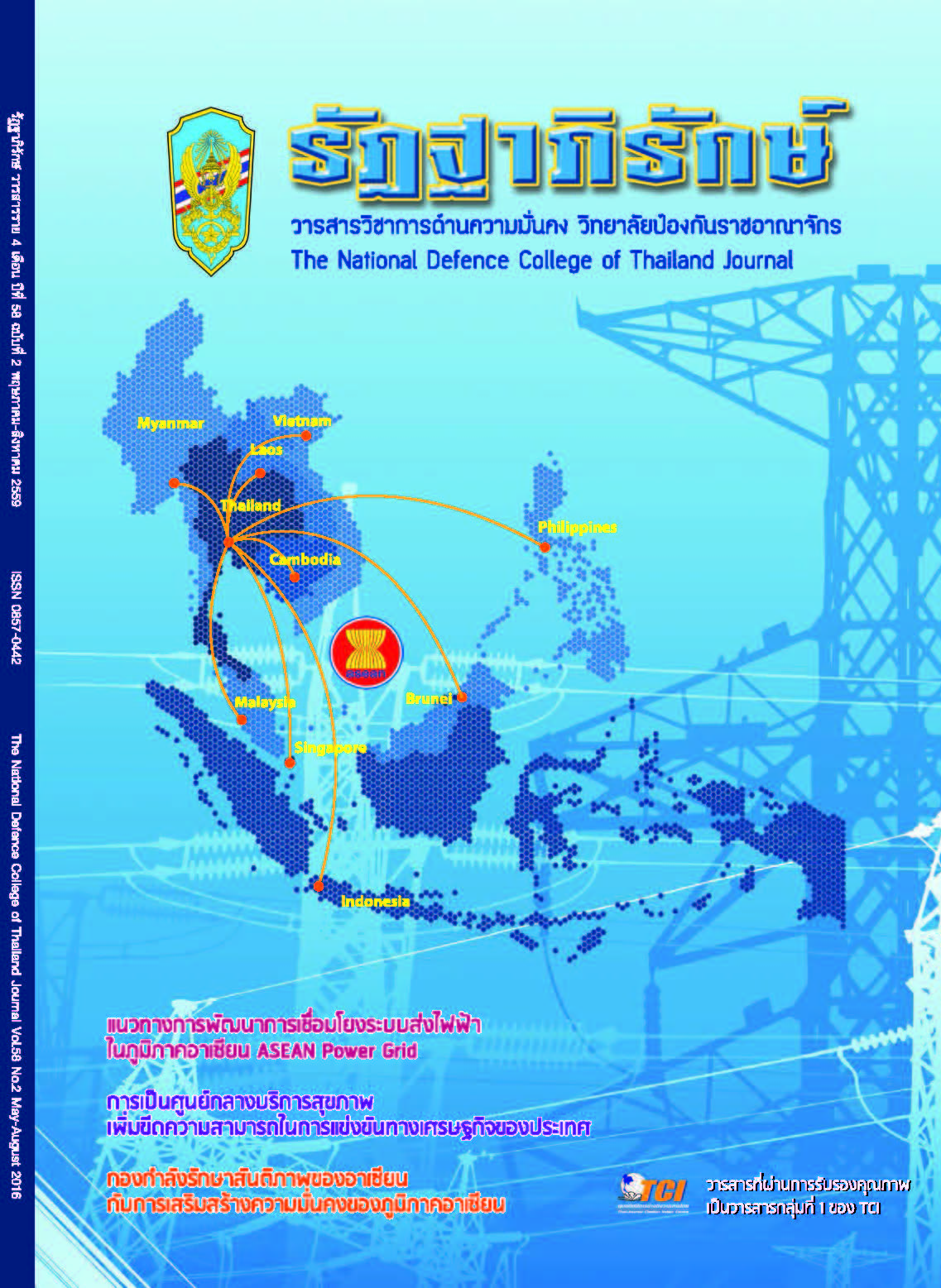The Approach to Development Interconnected Transmission System in ASEAN
บทคัดย่อ
The research’s purpose is to study development, problems and
solutions of the interconnected transmission system in ASEAN, for
efficient allocation of energy resources. To comply with the objectives
of sustainable energy in the ASEAN Power Grid, optimization of the
region’s energy resources towards an integrated ASEAN Power Grid
system and standardization all aspects of technical standards and
operating procedures as well as regulatory frameworks among member
countries are required. This qualitative research is based mainly on a
documentary study through data analyzed and collected from articles
and internet documents contributed by related government and private
sectors together with collective data from the Electricity Generation
Authority of Thailand (EGAT) as one of the participants in the ASEAN
Power Grid.
It has been found that ASEAN as a whole has abundant and
diversified energy resources. There is potential in hydropower, oil, natural
gas and coal. This diversity provides vast opportunities to exploit these
energy resources collectively within ASEAN thereby reducing the need
and dependency on imported fuel from other regions. The committee of
the ASEAN Interconnection Master Plan Study (AIMS) under the
supervision of the Heads of ASEAN Power Utilities/Authorities (HAPUA)
has been set up to study the master plan of the interconnected
transmission system in ASEAN. This master plan lasts 16 years (A.D.2009-2025). Its result shows that there are 16 potential projects to improveinterconnected transmission system in ASEAN. However, the Trans-ASEAN Energy Network is likely to have major problems like route
selection in the transmission lines. The solution of the development of an interconnected transmission system is to set the least impacting transmission line criteria. For legal and regulatory obstacles and trade barriers in the region, the center for electricity trade, standardizing technical codes and establishing a financial platform will be set up. For
environmental concerns, clear publicity of energy projects is mandatory.In conclusion, all solutions above are based on the balance between public interest and energy security.The study indicated that investment in transmission system development is worthy. The overall cost of electricity will be reduced. The electricity supply will be more available and reliable. Last but not least, the policies in supporting of renewable energy are important for sustainability.The suggestion for further research is to study other working groups of HAPUA: Generation and Renewable Energy , Transmission and APG, Distribution and Power Reliability & Quality, Policy and Commercial
Development, and Human Resources to determine and analyze the barriers of the interconnected transmission system in ASEAN for future achievement in the ASEAN Power Grid.
ดาวน์โหลด
เผยแพร่แล้ว
ฉบับ
ประเภทบทความ
สัญญาอนุญาต
บทความ ข้อเขียน หรือความคิดเห็นในนิตยสารนี้เป็นของผู้เขียน ไม่ผูกพันกับวิทยาลัย ป้องกันราชอาณาจักรและทางราชการแต่อย่างใด



